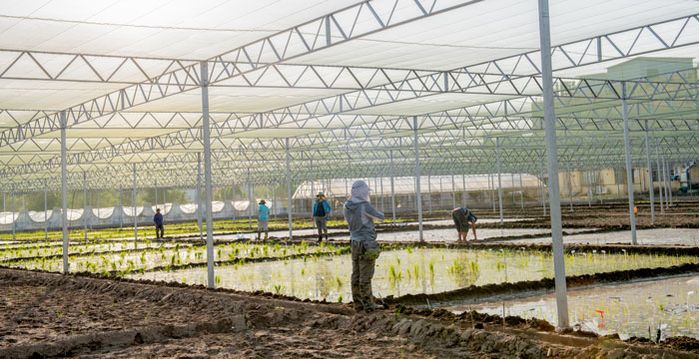Objectives:
Students will be able to...
- Identify geographic areas with high populations.
- Assess the demand for food, today and in the future.
- Comprehend a basic understanding of gene editing.
- Evaluate the pros and cons of gene editing, and specifically CRISPR technology as applied to agriculture.
- Analyze the factors that have led to China’s investment in CRISPR technology.
- Evaluate and define next steps for practicing ethical food con.
Warm-up:
- Create a rough sketch of a world map without looking at any resources. Identify the countries with the largest populations.
- Display a standard map of the world alongside a cartogram of world population.
- Discuss the advantages of studying both a standard map and a world population cartogram.
Dicussion Questions:
- Which country has the largest population in the world?
- Given that China has the world’s largest population in the world, do you think that is incentive to invest in developing advanced crops? Why? What other motivations may exist?
Introducing the Lesson:
CRISPR is a genome editing tool that will fundamentally change agriculture and medicine. Will China’s decision to heavily invest in genome editing of crops payoff in the long run?
Introducing the Reporting:
Use the following prompts to guide your discussion after reading the Science Magazine article To Feed Its 1.4 Billion, China Bets Big on Genome Editing of Crops
- Identify three traits that plant scientists are working to improve in crops. Why are these three traits so important? Explain.
- Cohen informs the readers that the state-owned company ChemChina bought Switzerland-based agribusiness Syngenta for $43 billion. Why do you think Cohen includes the information, that “this was the most China has ever spent on acquiring a foreign company”?
- China, the E.U. and the U.S. regulate genetically modified food differently. Do more research on this topic and create a chart indicating similarities and differences. Discuss how your views align with the varying perspectives on the regulation of GMOs.
- Scientist Gao didn’t exactly want to pursue a degree in agriculture, but because of China’s state-run education system, she did. What are the positive and negative aspects of this?
- Why is CRISPR preferred over TALEN to improve crops?
- Identify DowDuPont’s company Corteva’s role in gene-editing?
- Cohen identifies the major companies using CRISPR, Corteva, Syngenta, BASF and Bayer. Research these four companies. Why are these four companies so focused on CRISPR? How does gene-editing fit into these companies missions and portfolio?
- Cohen states, “Crops may have a lower profile, but the research also presents fewer risks and ethical dilemmas. “What does he mean by that? Research and present on this.
Extension Activity:
Students should create four different groups. Each group should choose a different CRISPR-related article from Science Magazine, listed below from the Pulitzer Center on Crisis Reporting website. Groups should read, analyze and discuss the articles. Groups should prepare to present the content of their article to the rest of the class. Each group should also facilitate a short whole-class discussion surrounding each article.
1. Did CRISPR Help—or Harm—the First-Ever Gene-Edited Babies?
2. The Untold Story of the ‘Circle of Trust’ Behind the World’s First Gene-Edited Babies
3. China’s CRISPR Push in Animals Promises Better Meat, Novel Therapies, and Pig Organs for People
4. Scrutinizing CRISPR Studies in the Wake of Gene-Edited Babies
